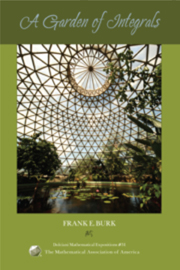Book contents
- Frontmatter
- Foreword
- Contents
- 1 An Historical Overview
- 2 The Cauchy Integral
- 3 The Riemann Integral
- 4 The Riemann–Stieltjes Integral
- 5 Lebesgue Measure
- 6 The Lebesgue Integral
- 7 The Lebesgue–Stieltjes Integral
- 8 The Henstock–Kurzweil Integral
- 9 The Wiener Integral
- 10 The Feynman Integral
- Series List
- Index
- About the Author
10 - The Feynman Integral
- Frontmatter
- Foreword
- Contents
- 1 An Historical Overview
- 2 The Cauchy Integral
- 3 The Riemann Integral
- 4 The Riemann–Stieltjes Integral
- 5 Lebesgue Measure
- 6 The Lebesgue Integral
- 7 The Lebesgue–Stieltjes Integral
- 8 The Henstock–Kurzweil Integral
- 9 The Wiener Integral
- 10 The Feynman Integral
- Series List
- Index
- About the Author
Summary
[Mathematics] … there is no study in the world which brings into more harmonious action all the faculties of the mind.
—J. J. SylvesterIntroduction
In the 1920s Norbert Wiener introduced the concept of a measure on the space of continuous functions. As you recall from Chapter 9, this idea arose from his attempts to model the Brownian motion of small particles suspended in a fluid. In the 1940s Richard Feynman (1918–1988) developed an integral on the same space of continuous functions in his efforts to model the quantum mechanics of very small particles such as electrons. To succeed, Feynman's path integral approach to quantum mechanics had to be consistent with Schrödinger's Equation.
Schrödinger's Equation
A frequent correspondent of Albert Einstein, Erwin Schrödinger (1887–1961) made a series of brilliant advances in quantum theory and the general theory of relativity. Our topic here is his breakthrough wave equation, discovered in 1925.
Suppose a particle of mass m is at position x0 at time t = 0 with a potential V(x0). The particle may move to position x at time t. The Heisenberg Uncertainty Principle sets accuracy limits on the determination of position x at time t. From physical considerations, then, we assign a probability to each path from x0 at time t = 0 to x at time t. This probability is P(t, x) = |ψ(t, x)|2, where ψ is a complex-valued quantity called the probability amplitude.
- Type
- Chapter
- Information
- A Garden of Integrals , pp. 235 - 277Publisher: Mathematical Association of AmericaPrint publication year: 2007



